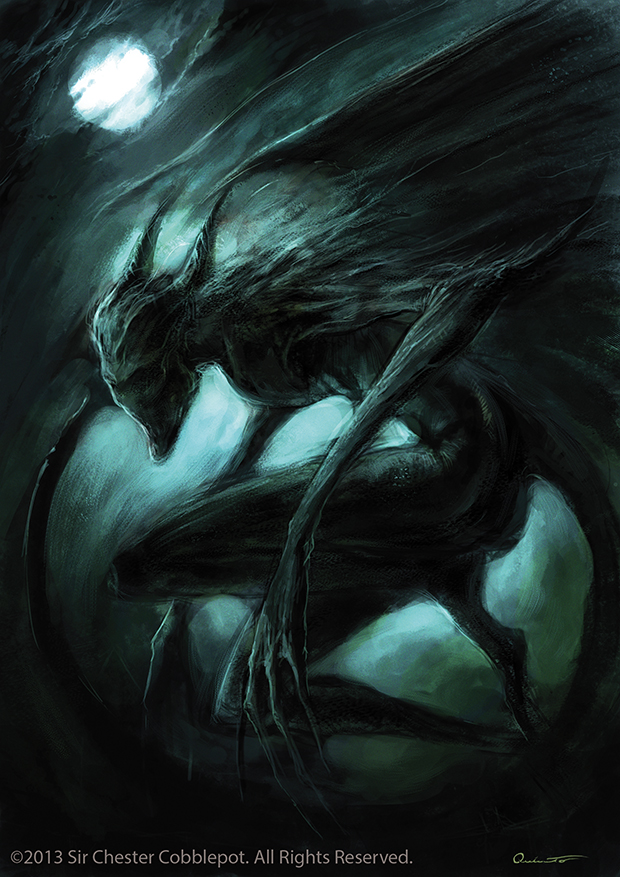The original mythological yeth hounds were headless dogs, said to be the spirits of unbaptized children. They would run around in the woods, making wailing noises. They were featured in both Dictionary of Phrase and Fable and in The Denham Tracts.
This art is from Monster Manual II.
Yeth Hound
Medium fiend, neutral evil
Armor Class
15 (natural armor)
Hit Points 45
(7d8+14)
Speed 40
ft., fly 60 ft.
Str Dex Con Int Wis Cha
16 (+3) 15 (+2) 15 (+2) 7
(-2) 14 (+2) 10 (+0)
Skills Perception +6, Stealth +6
Damage Resistances bludgeoning, piercing and slashing
from nonmagical weapons that aren’t silvered
Senses darkvision 60 ft., passive
Perception 16
Languages understands Infernal but can’t speak
Challenge 3
Bay. When the yeth hound howls or barks,
all creatures except other fiends within a 90 ft. radius must make a DC 12
Wisdom save or become frightened for 2d4 rounds.
Keen Hearing and Smell. The yeth hound has advantage on
Wisdom (Perception) checks that rely on hearing or smell.
Magic Weapons. The yeth hound’s weapon attacks are
magical.
Pack Tactics. The yeth hound has advantage on an
attack roll against a creature if at least one of the hound’s allies is within
5 feet of the creature and the ally isn’t incapacitated.
Actions
Bite. Melee weapon attack: +5 to hit,
reach 5 ft., one target. Hit: 7 (1d8+3) piercing damage. If the target is a
creature, it must succeed on a DC 13 Strength saving throw or be knocked prone.
A yeth hound
is a sinister flying canine that inhabits the lower planes. These large dogs are
black in color, with faces that strangely bear characteristics of a humanoid’s
face. Their eyes glow red, and their pointed ears curve to resemble horns.
Their ghastly baying can be heard for a mile or more.
Packs of the
beasts somehow find their way to the material plane, where they inhabit remote
wilderness.
Fearsome Pack Hunters
Yeth hounds
form packs, with the strongest hound as pack leader. They truly only need to
feed once per lunar cycle, but are eager carnivores. Their favored prey are
humans, demihumans and fey, but will hunt any warm-blooded creature they
encounter. They willingly run with evil creatures such as night hags or
vampires.
They hunt
much like other pack hunters do, though their ability to fly allows them to
cover a larger area than any normal beast. They will occasionally drag dead
prey back to their lair to be consumed at their leisure.
No natural
predator hunts a yeth hound, and many unnatural predators will avoid them as well.
Subterranean Lairs
Packs of
yeth hounds lair underground, away from the hateful light of the sun. Yeth
hounds fear the sun, and nothing can persuade one to venture out during the
day. If a hound is exposed to sunlight, it fades away to the ethereal plane,
unable to escape it on its own. As a result, packs only hunt at night, and
always return to their lair before dawn.
Yeth hounds
don’t value treasure, so any valuables found in their lair will be random
discarded remnants of their prey.





